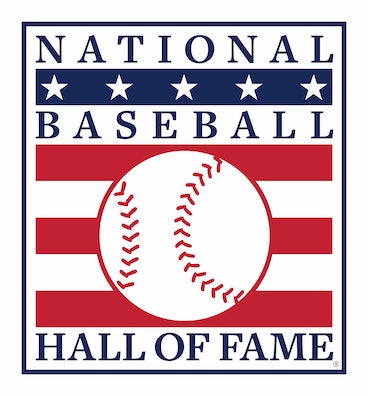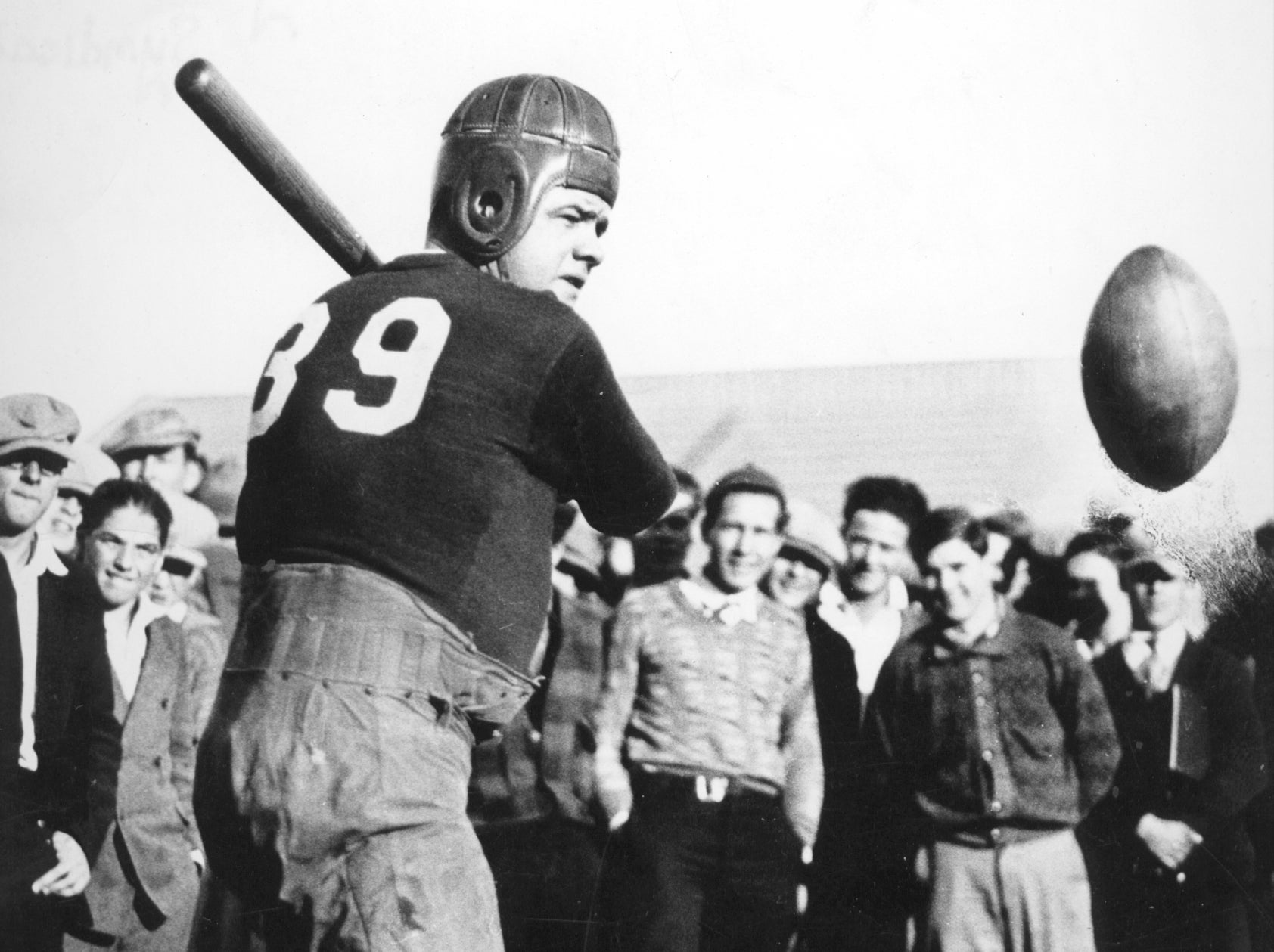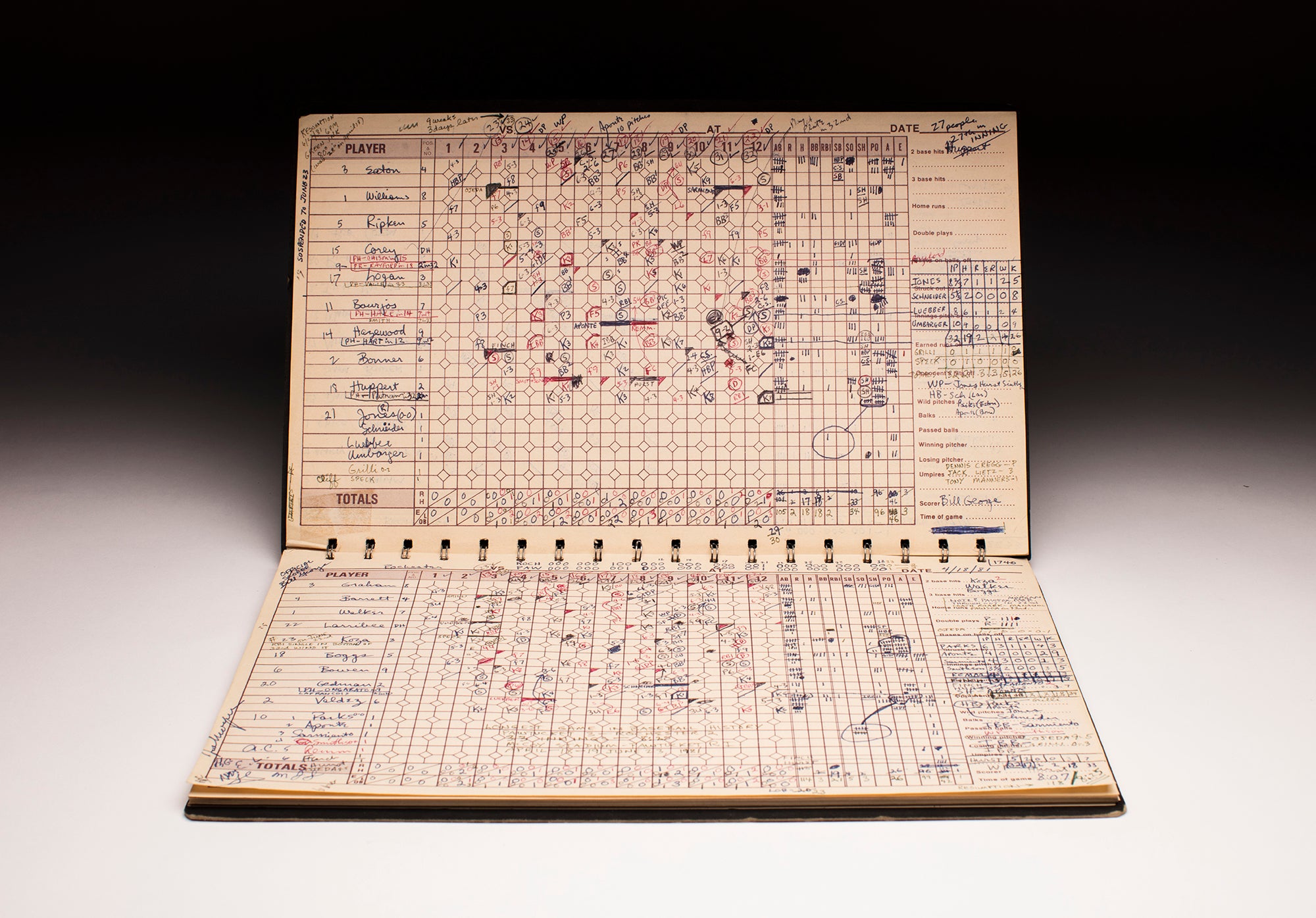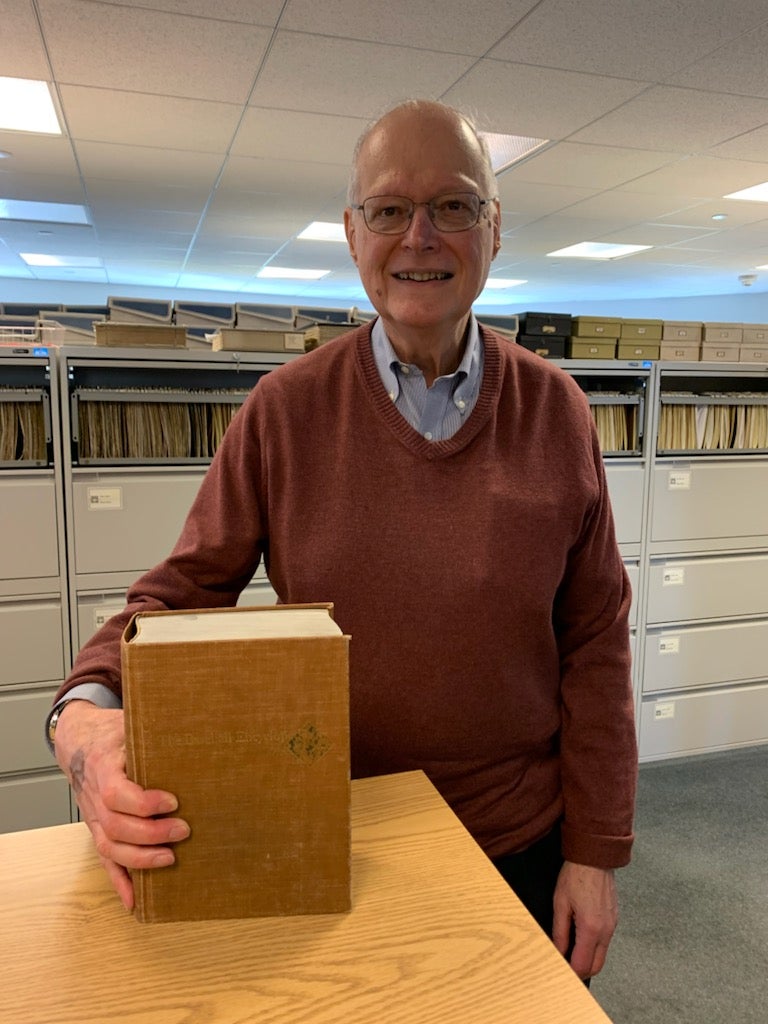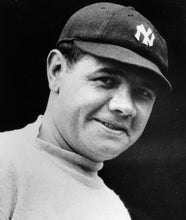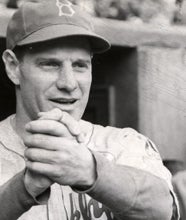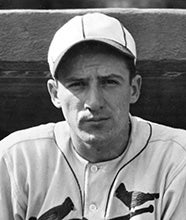- Home
- Our Stories
- Ernie Koy discovers his father’s history in Cooperstown
Ernie Koy discovers his father’s history in Cooperstown
Ernie Koy Jr. was a star running back in college and the pros. But when he came to Cooperstown, he was able to revisit the exploits of his similarly named father, a powerfully built and blazingly fast big league outfielder in the 1930s and ‘40s who established a path to success for his athletically inclined progeny.
Koy Jr., one of the most highly recruited high school football players in Texas in the early 1960s, eventually chose the University of Texas.
After a three-year varsity career, which included a Longhorn national championship in 1963, he joined the National Football League’s New York Giants for six seasons, which included a Pro Bowl selection in 1967.
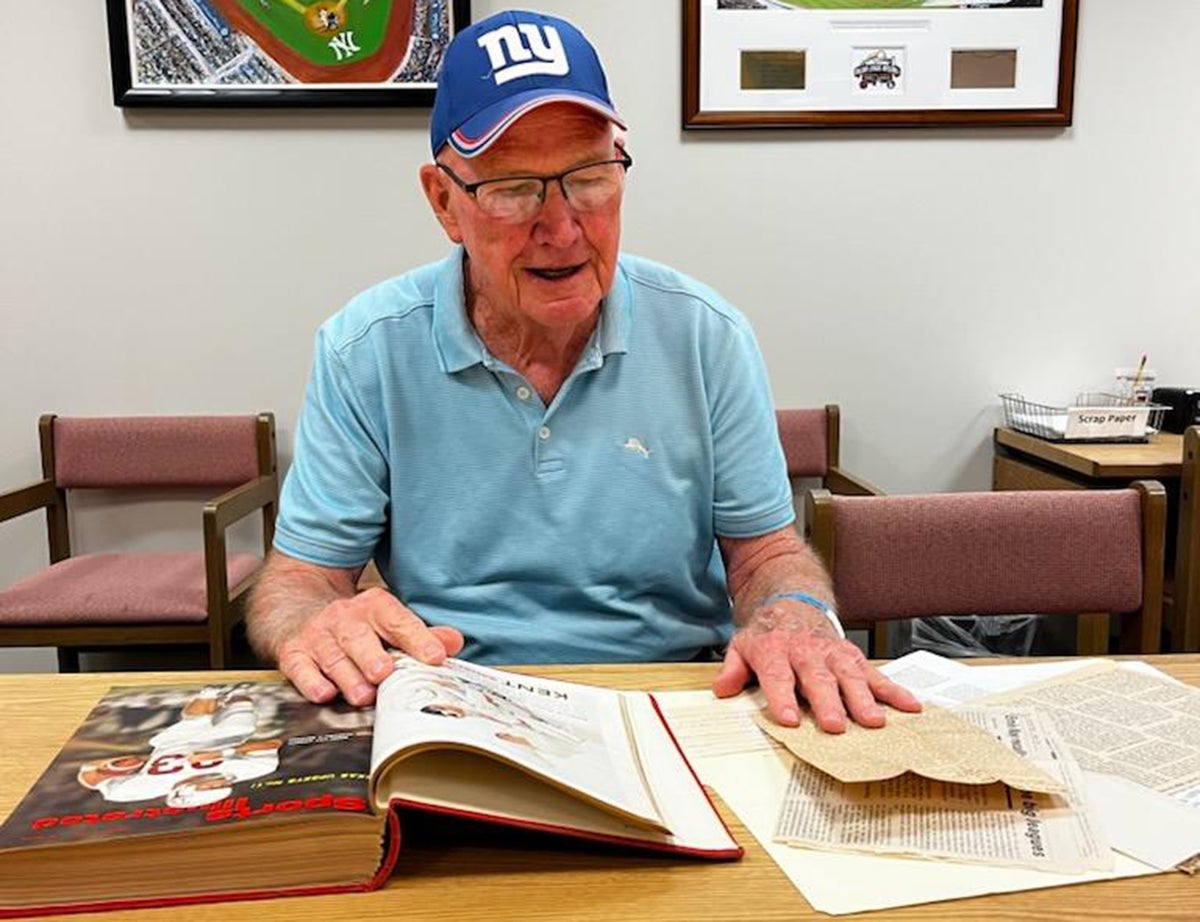
Visiting the National Baseball Hall of Fame and Museum on July 10, Koy, 82, was handed a file with clippings from his father’s diamond career. The elder Ernie Koy, who spent five seasons (1938-42) in the majors with Brooklyn, the Cardinals, Red and Phillies, passed away at the age of 97 in 2007.
“Well, this has always been one of my deals to come see the Baseball Hall of Fame with my father’s connection to baseball and then me playing in New York,” Koy said.
After starring on the football and baseball teams at Texas, the alma mater of his two sons and daughter, the Texas-bred Ernest Anyz Koy spent five seasons in the minor league system of the Yankees before his contract was sold to the Dodgers prior to the 1938 campaign.
“We really didn’t know the background on his baseball until we probably got into high school. He had a few things that really are unique to his playing career. He never did stress that, so he was more of a dad,” Koy recalled. “We did have a little ranching operation and farming, so most of my early childhood was spent out with the workers.
“But as I got older, I got to be 6-foot-3, and then over 200 pounds, so football kind of came easier than the baseball. And so, I went more football then. But he encouraged us to play everything – baseball, basketball, run track – not just one sport.”
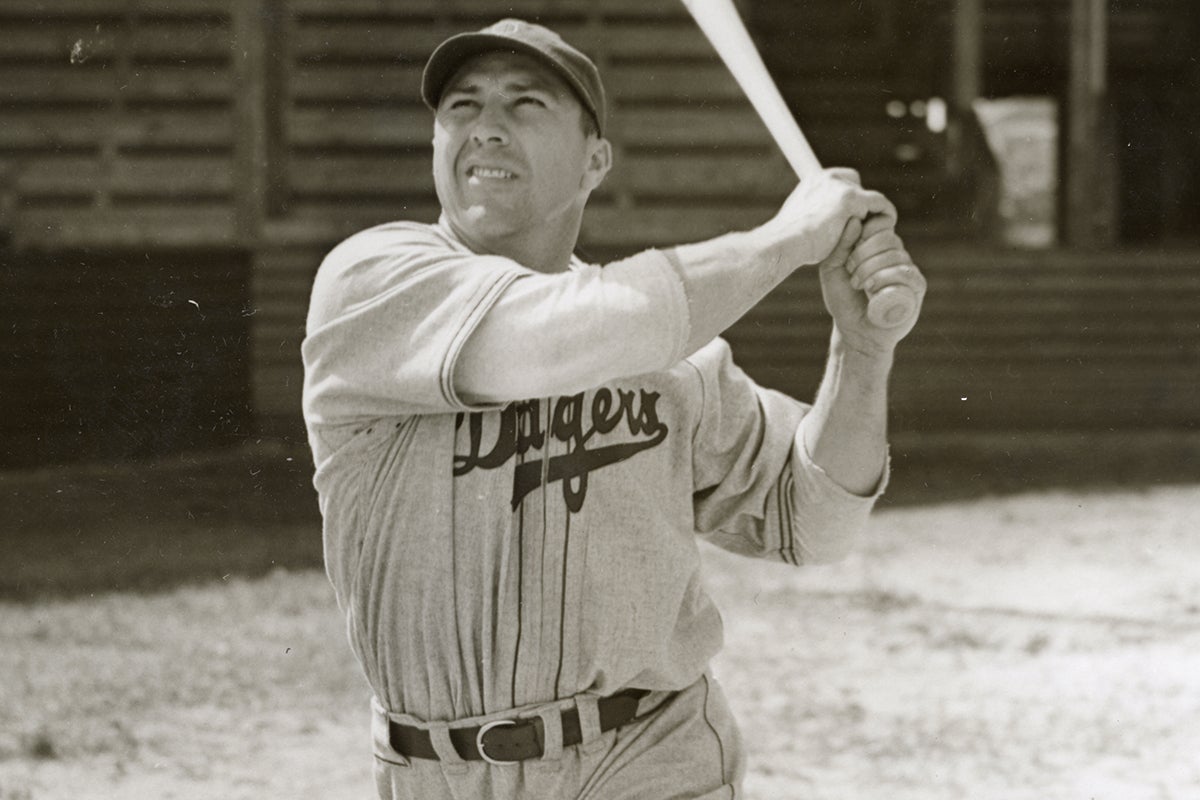
The elder Koy’s auspicious start began by homering in his first major league at-bat off the Phillies’ Wayne LaMaster on April 19, 1938. Later that initial campaign, he played a part in one of the sport’s most historic and dramatic events.
On June 15, 1938, four days after tossing a no-hitter against the Boston Braves, Cincinnati’s 23-year-old southpaw Johnny Vander Meer was facing Brooklyn at Ebbets Field before a standing-room only sellout crowd of 38,748 that included Babe Ruth in the first night game to be played in the metropolitan New York City area. Koy was the Dodgers’ starting center fielder while batting seventh in the lineup.
With the Reds up 6-0 in the bottom of the ninth inning, Koy came to bat with one out and the bases loaded – thanks to three consecutive walks by Vander Meer – and hit a grounder to third baseman Lew Riggs, who threw home for the second out. The Dutch Master completed his historic second consecutive no-no by inducing a flyout to center field by future Hall of Famer Leo Durocher.
“His story was that they would have never thrown him out at first,” Koy Jr. said with a laugh.
In a pregame sprinting exhibition, Koy received the loudest pregame cheer when he edged Jesse Owens, hero of the 1936 Olympics and holder of nine world records at the time, in the 100-yard dash. But Koy was given a handicap of 10 yards.
Koy’s 1938 rookie season was arguably his best, as he batted .299 with career highs in homers (11), runs scored (78) and RBI (76). After being involved in a six-player midseason trade that included future Hall of Famer Joe Medwick being shipped to Brooklyn and $125,000 going to the Cards, Koy’s last time spent in the majors came in 1942 before enlisting in the Navy during World War II.
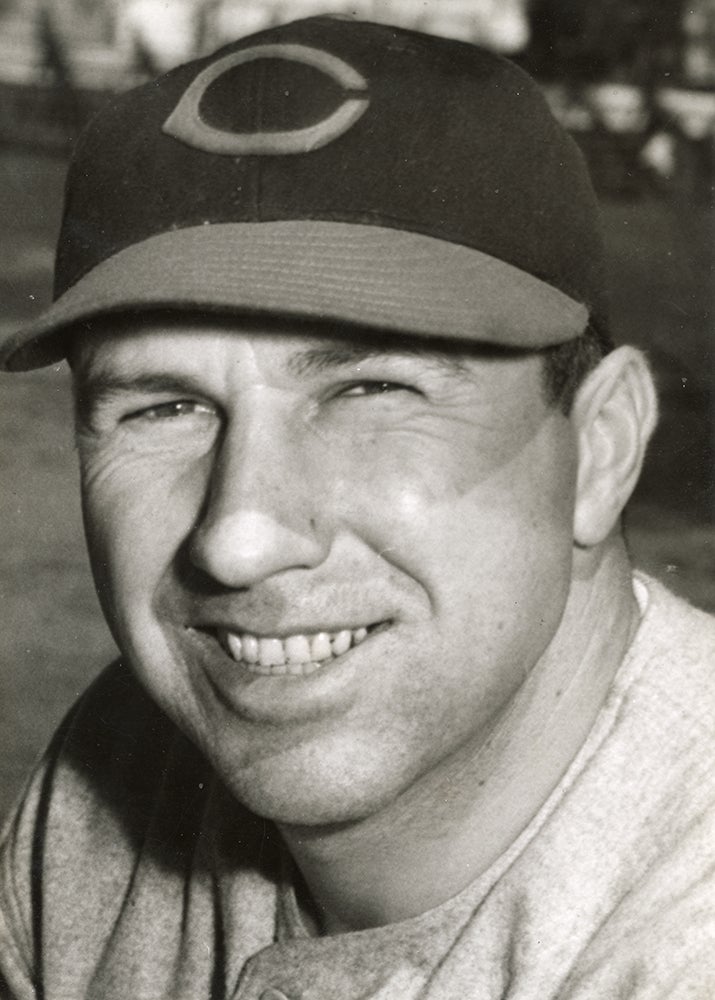
Koy was given the nickname “Chief” during his playing career, attributed to, as was reported at the time, “Broad features, high cheekbones and leathery complexion.” In fact, he was of German and French descent, but that didn’t stop fans of giving their interpretation of a Native American “war-whoop” when Koy advanced to the plate.
“I think he kind of liked it,” Koy Jr. said with a smile.
Koy’s children all had success in the sporting realm. Besides Ernie Jr., Ted won a national championship with Texas in 1969 before being selected in the second round of the 1970 draft by the Oakland Raiders as a running back and tight end, spending five years in the NFL including four with the Buffalo Bills. And a daughter, Margaret, out of the University of Texas Journalism School, was one of the first female sports reporters in the state.
“Daddy encouraged us. If we’d come up to the gate to go into the pasture, our job was to get out the gate and he’d drive on through, and then we’d have to run to where he was in the pasture. So, we all got to be runners at an early age,” Koy Jr. said. “I could run like the 100-yard dash in those days about 10 seconds flat. And my brother, Ted, he ran like a 9.7, 9.8.
“My sister would have been the best athlete of the bunch if she pursued it. One of my junior high coaches once talked about the Koy family, and they said that I got a lot of credit for being a kicker, but the best kicker in the family was my sister Margaret.”

In 1964, after Koy Jr. led Texas in rushing with 574 yards, the Longhorns played No. 1-ranked Alabama, led by coach Bear Bryant and quarterback Joe Namath, in the ’65 Orange Bowl. Koy, who had a 79-yard touchdown run in Texas’ 21-17 upset victory over Alabama, was on the Jan. 11, 1965, cover of Sports Illustrated.
“After the Orange Bowl, I flew out to Hawaii to play in the Hula Bowl,” Koy Jr. said. “And after the game, I walk out, and this kid comes running up to me with the magazine and he said, ‘Would you sign it?’ I said, ‘Whoa, where’d you get this?’ That was the first time I’d seen it. I just couldn’t believe it. And then I finally get back to Austin and everybody is talking about it.”
As for his relationship with baseball, Koy Jr. said he had a chance to give the sport a chance professionally after his football career came to an end.
“I was an outfielder like my father and played baseball until I got to college,” Koy Jr. said. “In fact, when the Giants turned me loose, there was a left-handed quarterback with the Bears named Bobby Douglass who ran a lot. We were both released about the same time, and the Phillies contacted us about playing with them in the minor leagues.
“And I remember telling the fellow, ‘I haven’t picked up a bat or hit a ball in 10 years.’ And he said, ‘But we can’t teach you to run and throw.’ I could do that. He said, ‘Well, we can teach you to hit.’ I decided not to pursue that, though. I was almost 30 years old. But it would have been fun to follow in my father’s footsteps. Maybe I could have had a clipping file in Cooperstown, too.”
Bill Francis is the senior research and writing specialist at the National Baseball Hall of Fame and Museum
